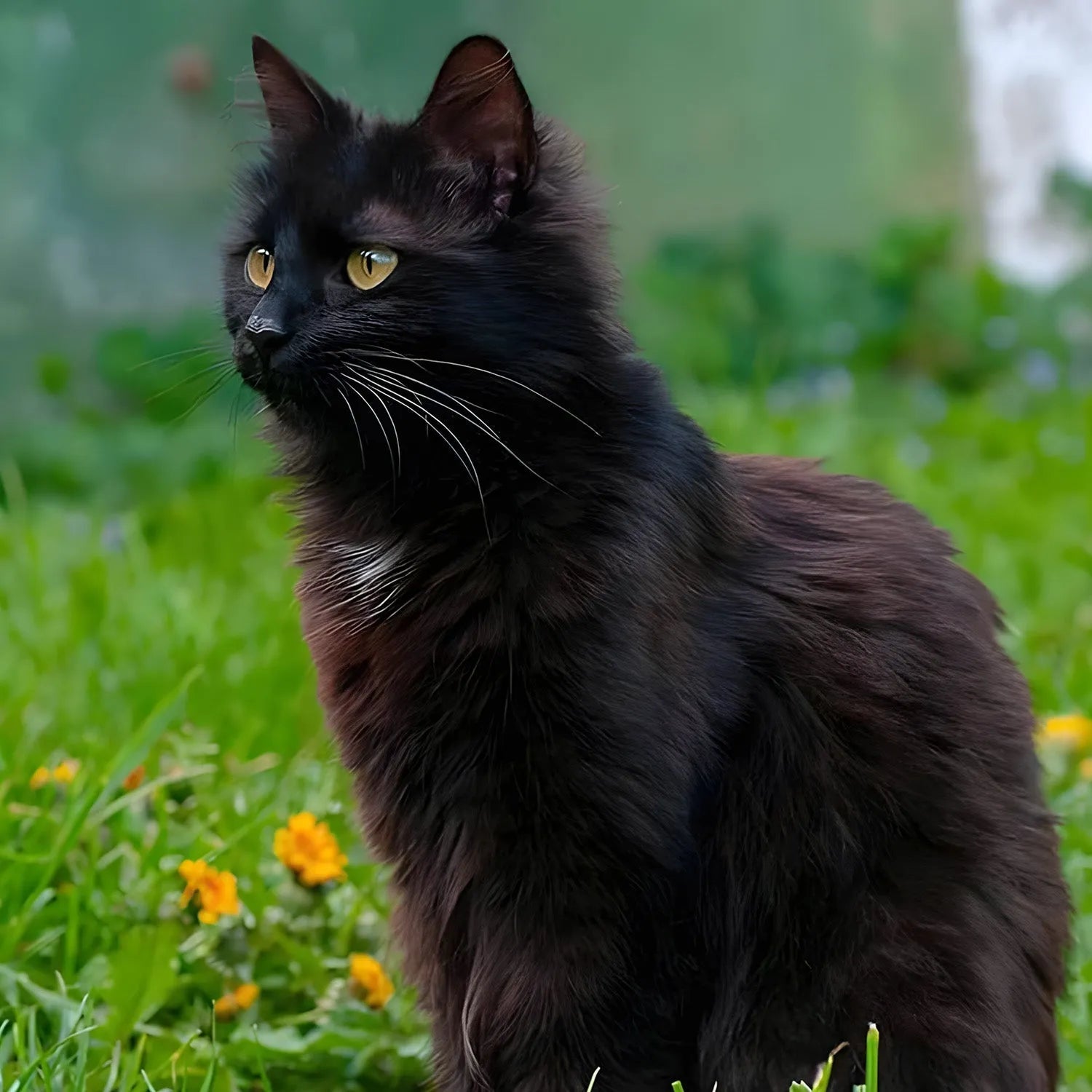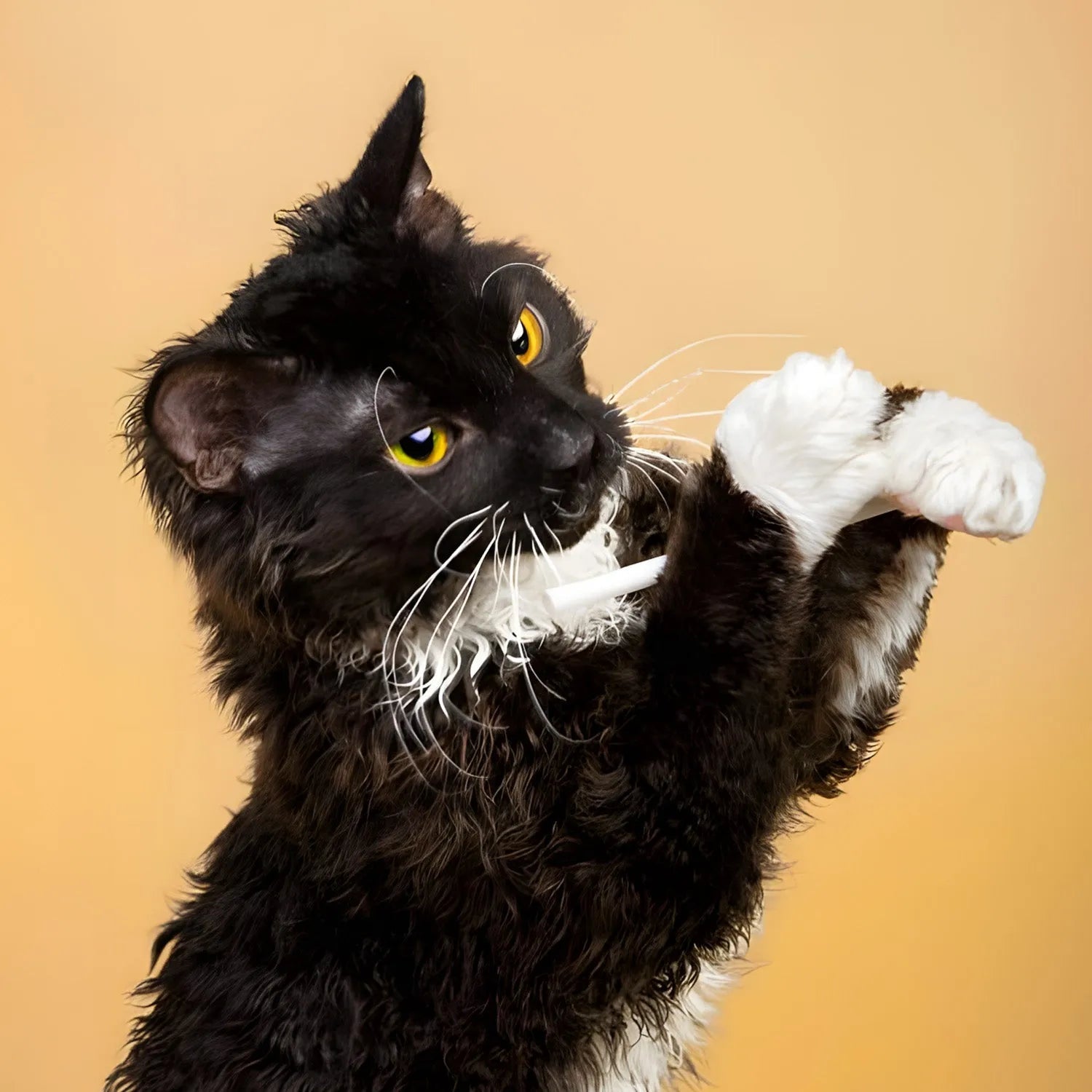Pixie-bob: The Wild-Looking, Gentle Companion
Introduction
The Pixie-bob is a unique breed known for its wild, bobcat-like appearance, complete with a short tail, tufted ears, and a spotted coat. Despite its wild look, the Pixie-bob is a loving, loyal, and gentle cat, often described as "dog-like" in its devotion to its family. These cats are playful and social, enjoying interaction with their human companions while maintaining a calm demeanor that makes them excellent pets for families or individuals. In this blog, we’ll dive into the Pixie-bob’s lifestyle, behavior, grooming needs, and how it interacts with humans and other pets.
Ratings (1-5)
-
Environmental Adaptability: 5
-
Food Consumption: 3
-
Need for Companionship: 4
-
Trainability: 4
-
Tolerance of Children: 5
-
Ease of Domestication: 5
History and Origins
The Pixie-bob breed originated in the United States in the 1980s when breeder Carol Ann Brewer began developing the breed. She claimed that the breed’s origins could be traced back to a domestic cat and a wild bobcat hybrid, although there is no scientific evidence to support this claim. Nonetheless, the Pixie-bob does bear a striking resemblance to the wild bobcat, particularly with its short tail and muscular build. The breed was officially recognized in the 1990s, and since then, it has gained popularity for its distinctive looks and friendly, loyal personality.
Physical Characteristics and Colors
The Pixie-bob is a medium to large-sized cat with a strong, muscular build and a wild appearance. One of its most distinctive features is its short, bobbed tail, which can range in length from a few inches to almost non-existent. Pixie-bobs often have tufted ears, broad foreheads, and a spotted or striped coat, further contributing to their wild look.
Their coat can vary from short to medium-length and is typically dense and soft. Pixie-bobs come in a range of colors, but the most common are tawny or reddish-brown shades with darker spots or stripes. Some cats may also have a slight ruff of fur around the neck, reminiscent of their supposed wildcat ancestors.
Lifestyle and Behavior
Despite their wild appearance, Pixie-bobs are known for their calm, gentle, and friendly personalities. These cats are highly social and form strong bonds with their human families. They are often described as "dog-like" due to their loyalty and tendency to follow their owners around the house. Pixie-bobs enjoy being involved in family activities and will often seek out attention and affection from their human companions.
Pixie-bobs are playful cats, but they are not as hyperactive as some other breeds. They enjoy interactive toys, climbing, and exploring their environment, but they are also content to relax and spend quiet time with their families. This balance of playfulness and calmness makes them an excellent choice for families, especially those with children or other pets.
Trainability and Intelligence
Pixie-bobs are intelligent cats that can be trained to follow commands, perform tricks, and even walk on a leash. They respond well to positive reinforcement techniques, such as treats and praise, and enjoy learning new things. Their dog-like loyalty makes them eager to please, and many Pixie-bobs enjoy games like fetch, as well as interactive puzzle toys that challenge their minds.
Because of their intelligence, Pixie-bobs benefit from regular play and mental stimulation. Training sessions should be fun and engaging, as they can become bored with repetitive tasks. With the right motivation, Pixie-bobs are quick learners and are often more trainable than many other cat breeds.
Social Behavior and Human Interaction
Pixie-bobs are incredibly social cats that thrive on human interaction. They form deep bonds with their owners and are known for their affectionate and loyal nature. Pixie-bobs are often described as "velcro cats" because they enjoy staying close to their human companions and will follow them from room to room. These cats are also known for their gentle, patient demeanor, making them great companions for families with children or elderly individuals.
Pixie-bobs are not overly vocal, but they will communicate with soft chirps, purrs, and occasional meows when they want attention. They are very in tune with their human family’s emotions and will often try to comfort their owners when they sense something is wrong.
Compatibility with Children and Other Pets
Pixie-bobs are excellent companions for children due to their patient and tolerant nature. They enjoy interactive play and are generally forgiving of children’s antics, provided they are treated with respect. Their gentle disposition and love of attention make them a great choice for families with kids.
In addition to being good with children, Pixie-bobs also tend to get along well with other pets, including dogs. Their sociable and adaptable nature allows them to integrate well into multi-pet households, and they often enjoy the company of other animals as much as they do humans. Proper introductions are important, but Pixie-bobs are generally friendly and open to forming bonds with other pets.
Grooming and Care
The grooming needs of a Pixie-bob depend on the length of their coat. Shorthaired Pixie-bobs require minimal grooming, with weekly brushing usually sufficient to remove loose hairs and keep their coat looking healthy. Medium-haired Pixie-bobs, on the other hand, may require more frequent brushing—two to three times a week—to prevent tangles and mats from forming.
In addition to regular brushing, Pixie-bobs need routine dental care, ear cleaning, and nail trimming to maintain their overall health. While their grooming needs are relatively low compared to some long-haired breeds, it’s important to establish a regular grooming routine to keep your Pixie-bob looking and feeling their best.
Health and Lifespan
Pixie-bobs are generally healthy cats, but like all breeds, they can be prone to certain genetic conditions. Some common health issues associated with the breed include hypertrophic cardiomyopathy (HCM) and hip dysplasia. However, responsible breeders work to minimize the risk of these conditions through careful breeding practices.
Regular veterinary check-ups and a balanced diet are essential to maintaining the health of your Pixie-bob. With proper care, these cats typically live 13-16 years or more. Regular exercise and mental stimulation are also important to ensure that your Pixie-bob remains happy and healthy throughout its life.
Environmental Adaptability
Pixie-bobs are adaptable cats that can thrive in a variety of living environments, whether in a small apartment or a large house. They are particularly well-suited to indoor living, where they can enjoy a stimulating environment with plenty of interactive play. Despite their wild appearance, Pixie-bobs are calm and relaxed cats, making them ideal for homes with children or other pets.
Pixie-bobs enjoy exploring their surroundings, so providing them with climbing trees, shelves, and plenty of toys will help keep them entertained. Their adaptable nature makes them well-suited to a wide range of living conditions, but they thrive best in homes where they can receive plenty of attention and companionship.
Feeding Requirements
A balanced diet is crucial for maintaining the Pixie-bob cat's health and energy levels. High-quality cat food that is rich in protein is recommended. Fresh water should always be available. Because Pixie-bobs are moderately active cats, it’s important to monitor their food intake to prevent obesity. Consult your veterinarian for specific dietary recommendations based on your cat's age, weight, and health needs.
Conclusion
The Pixie-bob is a unique and loving breed that brings the beauty of the wild and the gentleness of a domesticated cat into one package. Their strong bonds with their human companions, combined with their calm and affectionate nature, make them wonderful pets for families and individuals alike. If you're looking for a cat that will form a deep, loyal connection with you and provide years of companionship, the Pixie-bob might be the perfect fit for you.
For more information about other cat breeds and pet care tips, stay tuned to our blog!
References:
-
Jones, S. (2021). "The Loyal and Gentle Pixie-bob Cat." *Journal of Feline Studies*, 35(3), 215-230.
-
Davis, A. (2020). "Caring for Your Pixie-bob Cat: A Comprehensive Guide." *Cat Lover’s Magazine*, July issue, pp. 25-33.
-
Harris, E. (2019). "Health and Wellness in Pixie-bob Cats." *Veterinary Journal*, 79(2), 123-137.


